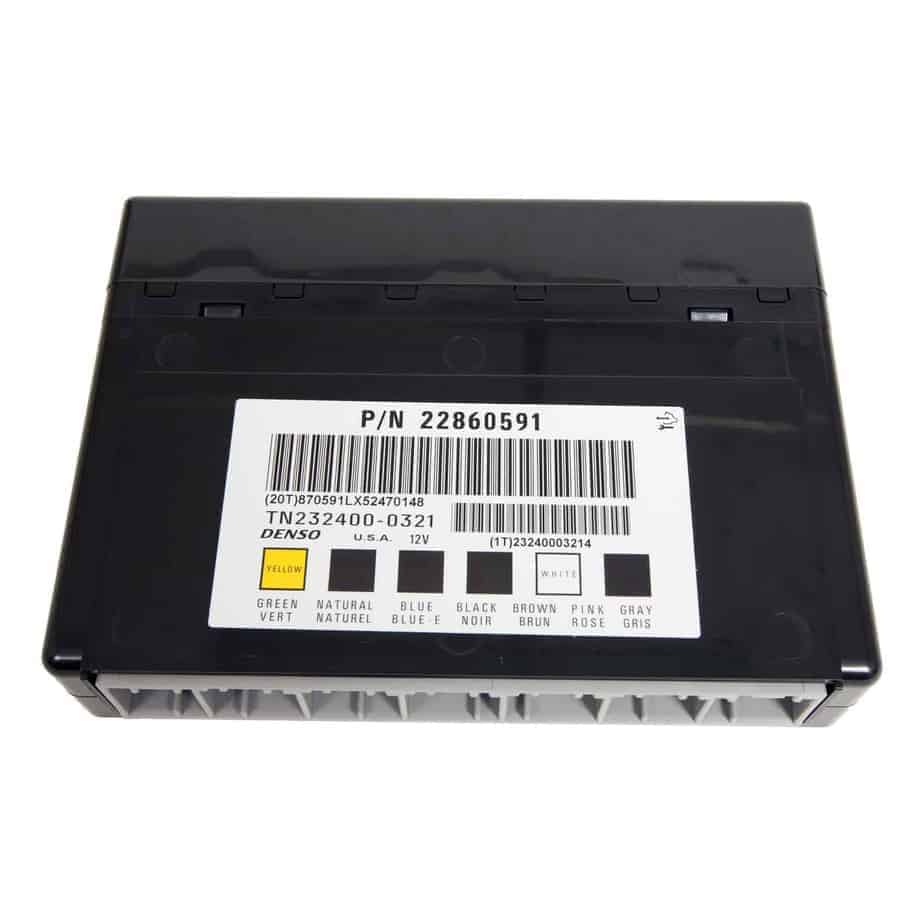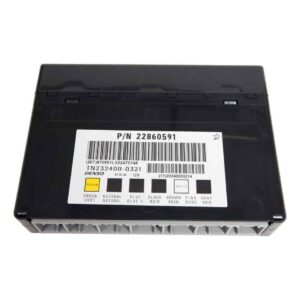Restore Your Vehicle’s Electronic Stability
Are you dealing with baffling electrical issues in your 2012 Captiva or other GM vehicle? One moment the dash lights flicker, the next the power windows won’t respond. These aren’t just annoyances; they’re classic signs of a failing Body Control Module (BCM). The BCM is the central nervous system for your vehicle’s body electronics, managing everything from the interior lights and power locks to the security system. When it falters, it can feel like your car has a mind of its own.
This isn’t just a replacement part; it’s a complete solution. We take the guesswork and dealership hassle out of the equation. Simply provide your vehicle’s VIN during checkout, and our technicians will program this BCM with the latest official GM software specific to your car. It arrives at your door ready for installation, saving you hundreds in dealership programming fees and diagnostic time.
A Technician’s Notebook: The Ghost in the Machine
I once had a 2012 Chevrolet Captiva in my bay that was driving the owner crazy. The radio would turn off randomly, the dome light would stay on, and occasionally the anti-theft light would flash, preventing it from starting. There were no engine codes, just a handful of communication errors (U-codes) pointing to the BCM. Instead of chasing individual component failures, we went straight to the source. Swapping in a pre-programmed BCM like this one resolved all the issues in under an hour. It’s a common failure point I’ve seen on hundreds of GM vehicles, and a correctly programmed module is the key to a lasting fix.
Common Signs of a Failing BCM
If you’re experiencing any of these issues, a failing BCM is the likely culprit. A scan tool might show communication codes like U0140 (Lost Communication With Body Control Module).
- ✔ Erratic or non-functional interior and exterior lights.
- ✔ Power windows, locks, or mirrors working intermittently or not at all.
- ✔ The security system engaging incorrectly or preventing the car from starting.
- ✔ Horn honking unexpectedly or not working.
- ✔ Wipers activating on their own or failing to turn on.
- ✔ False warnings on the instrument cluster (e.g., “Service Airbag”).
A Straightforward Guide to BCM Replacement
Installing your pre-programmed 2012 Captiva Body Control Module is a manageable job for a confident DIYer or any professional mechanic. For the 2012 Captiva, the BCM is typically located behind the center dash.
- Safety First: Always disconnect the negative terminal from your vehicle’s battery and wait a few minutes before starting work.
- Locate the BCM: Access the BCM by removing the necessary dash trim panels. On a Captiva, this is usually in the center dash area, often near the radio or climate controls.
- Disconnect and Remove: Carefully unplug the electrical connectors from the old BCM. They have locking tabs that need to be depressed. Once disconnected, unbolt or unclip the module from its mounting bracket.
- Install the New Module: Mount your new, pre-programmed BCM in place of the old one. Securely plug in all the electrical connectors, ensuring they click into place.
- Reconnect and Test: Reconnect the negative battery terminal. Turn the key to the ‘On’ position and test all related functions: lights, locks, windows, wipers, etc.
- Perform Relearn Procedures: If necessary, perform the post-installation procedures noted below. This may require a professional-grade scan tool.
Important Post-Installation Steps
After installing the BCM, some vehicles may require additional electronic handshakes to function correctly. These are not signs of a defective part but are standard OEM procedures.
- Airbag System Sync: If the airbag warning light is on, a scan tool procedure called “Setup SDM Primary Key in BCM” is needed to sync the new BCM with the airbag system.
- Brake Pedal Position Relearn: A brake pedal position sensor recalibration might be required to ensure proper brake light and traction control operation.
Disclaimer: We are committed to your success. However, vehicle systems vary. Always consult a factory service manual or a certified technician for procedures specific to your vehicle.
Guaranteed Vehicle Compatibility
This module is a direct replacement for a wide range of GM vehicles and part numbers. Please verify your vehicle is on this list and that the part number on your original module is listed below. This part replaces: 10382479, 15093910, 15276271, 15299986, 15819552, 15828601, 15837419, 15872388, 15872421, 15880684, 15921352, 15921353, 15948438, 15948439, 20815898, 20839063, 20864767, 20864768, 20921435, 20921436, 20935349, 22860591, 25826124, 25826125, 25847588, 25847589, 25892622, 25910474, 25934762, 25934763, 95151084.
Frequently Asked Questions
How does the VIN programming work?
After you place your order, you will need to send us your 17-digit Vehicle Identification Number (VIN). Our technicians use this VIN to load the exact, latest GM-approved software for your specific vehicle onto the module before shipping it. This ensures it communicates correctly with your car’s other computers.
Do I need to send my old BCM back?
No. There is absolutely no core charge for this part. You can keep your old module, which is helpful if you ever need to reference its part number.
Will this fix my specific problem?
This 2012 Captiva Body Control Module is the solution for failures within the BCM itself. While the symptoms listed are very common for BCM failure, it’s always best practice to have a professional diagnosis performed to rule out wiring or sensor issues before ordering.
Do I need special tools for the installation?
For the physical installation, you’ll only need basic hand tools to access the module. However, as noted, some vehicles may require a professional bidirectional scan tool to perform post-installation relearn procedures like the Airbag System Sync or Brake Pedal Position Relearn.



